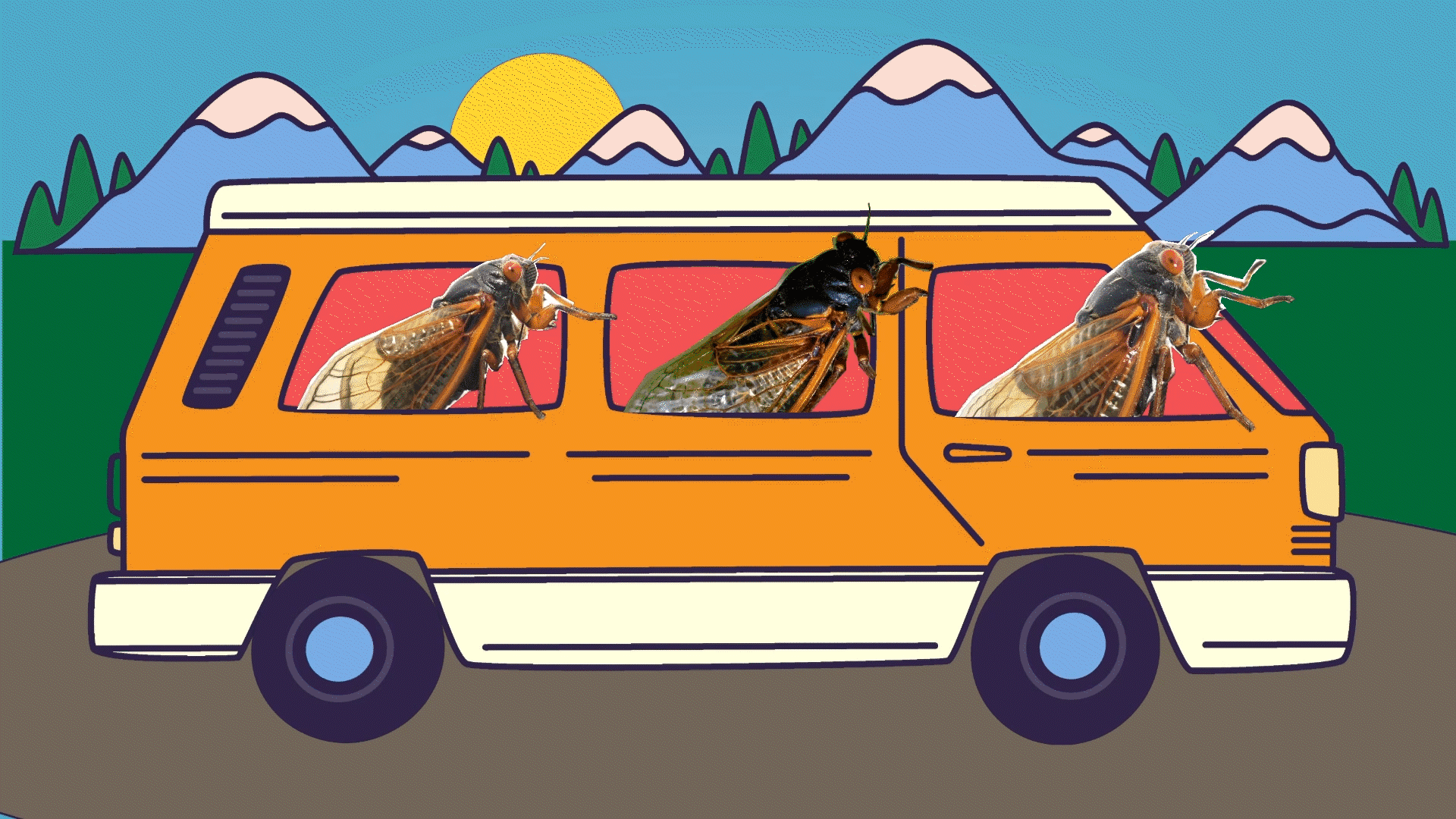- April 04, 2024
- By Chris Carroll
This month, residents of the DMV hoping to witness a jaw-dropping wonder of nature will have to travel to experience the full glory—and no, it’s not Monday’s total solar eclipse.
Theother natural wonder will be when countless cicadas from two broods (one on a 13-year cycle and another of 17-year cicadas) muscle their way out of the ground in 18 states. They’ll climb up a fence or a plant and shed their shells for a few weeks of romantic pursuits, blasting their ear-piercing “song” and finally dying off in piles while their offspring burrow into the soil to prepare for their own emergence years later.
It will be the first time that members of Brood XIX—the “Great Southern Brood”—and Brood XIII have met each other since 1803, says University of Maryland cicada enthusiast Mike Raupp, aka “The Bug Guy,” a professor emeritus of entomology who’s a staple media commentator on all things insect-related.
But whether it’s an occasion for disappointment or a quiet prayer of thanks, don’t bother to look for them near the UMD campus, he advised. Brood XIX’s stronghold sweeps in an arc across the Southeastern U.S. and up the country’s middle, while Brood XIII is mostly confined to the Upper Midwest.
“There’s a relictual group of Brood XIX hanging out in southern St. Mary’s County—that’s the only place they exist in Maryland,” Raupp said. “I’ll be heading south to greet them with a few other cicada aficionados later in April.”
Raupp spoke to Maryland Today about cicada history, whether this emergence might beat our area’s Brood X spectacle in 2021 and when we can next enjoy—or flee—the big bugs.

In Maryland, why are they only at the southern tip of St. Mary’s County?
I wish we could look a couple million years back when this evolution was happening and see what the distribution was then. I think the possibilities include that the bay waters were lower at that time, and there was some landmass connection with that northern neck part of Virginia. And maybe they somehow migrated or got blown by the wind across the channel to southern Maryland. It’s a mystery that is pretty interesting to think about.
This time, will there be densities or numbers of bugs like Brood X here three years ago?
The Northern Illinois brood is supposed to be a powerful, dense brood, and I expect that area to be very full of cicadas. In terms of the overall numbers, I think it’s kind of a toss-up which generates more: Brood X across its broad northern and central swath, or Brood XIX, the Great Southern Brood. I know people want to rank them, but I just don’t know if we have the kind of knowledge we need to say which is bigger in numbers.
What makes estimating so hard?
There’s so much variability, and it’s so patchy how they’re distributed. You can have a place like my neighborhood in Columbia that was absolutely rife with cicadas in 2021. Or you can have a place where they’ve plowed the ground and they’re putting down an impervious surface for parking, or they’re going to pave it over with townhomes. In those places, the cicadas are just gone. Other places, you could have thousands, or maybe tens of thousands in an acre.
Will members of the two broods interact?
There’s some interesting biology behind this, and some possibilities for hybridization, for sure. And one of the questions a lot of scientists are interested in is whether hybrid offspring might split the difference and emerge off cycle for both the 13-year and 17-year cicadas. The rub is it will be hard to tell whether they’re just regular stragglers like all broods have, or if the timing has changed because they are hybrids.
Why are these closely related species on different clocks?
These insects have developed one of the most bizarre, creative strategies for survival of any creature on the planet. The emerge at just the right time and in lockstep, and in massive numbers, so they can overwhelm any predators, by essentially filling the bellies of predators that want to eat them—and there are many more behind them to carry on the species.
When’s the next time we get to see a major cicada emergence locally?
We’ll have Brood XIV in 2025 in Maryland and a dozen surrounding states ranging from New York to Georgia and it’s going to be a big brood. Not Brood X-big, but it will be impressive in this area. And in 2030, we will have an encore performance when Brood II returns to Maryland. For cicada-philes, it doesn’t get much better than this.
